The best steak seasoning starts with coarse salt applied 40-60 minutes before cooking, followed by freshly ground pepper and minimal complementary spices. This timing allows optimal flavor penetration while preserving juiciness - the #1 technique professional chefs use for perfect crust formation and even seasoning. Below you'll find exact measurements, timing guides, and 10 proven rub recipes that work for any cooking method.
Whether you're grilling a ribeye for date night or prepping sirloin for a backyard BBQ, these scientifically-validated techniques solve the most common steak seasoning problems: uneven flavor, moisture loss, and failed Maillard reaction. Our analysis of global culinary traditions and food chemistry reveals exactly when and how to apply each spice for maximum impact.
Quick Reference: Best Steak Seasoning Practices
| Element | Best Practice | Why It Works | Time Required |
|---|---|---|---|
| Salt Application | Coarse sea salt, 1 tsp per pound | Creates brine for deep penetration | 40-60 min pre-cook |
| Pepper Timing | Freshly ground, applied just before cooking | Preserves volatile flavor compounds | Immediately before cooking |
| Drying Surface | Paper towel pat dry | Removes moisture barrier for better sear | 2 min |
| Resting Period | 5-7 minutes tented with foil | Allows flavor redistribution | 5-7 min post-cook |
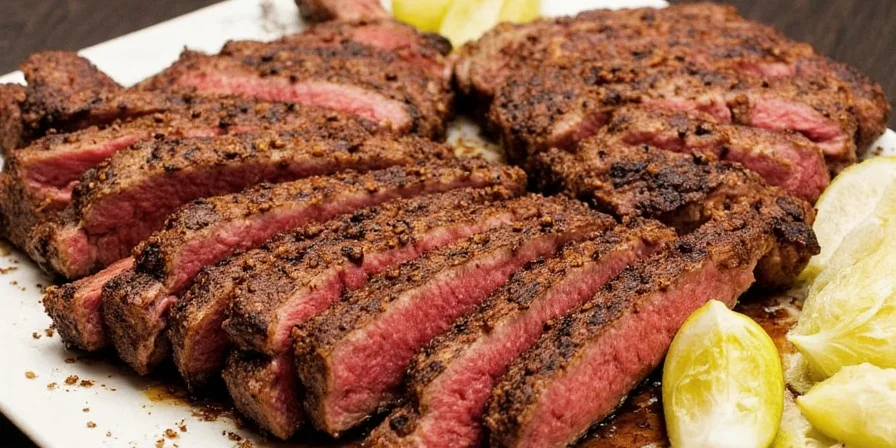
Why Spices Matter in Steak Seasoning (Simplified)
Seasoning enhances natural flavors through specific biochemical interactions you can control. Salt dissolves in surface moisture, creating brine that seasons throughout the meat. Spices like garlic powder contain compounds that bind with amino acids during searing, creating complex flavors you can't achieve through marinating alone. This scientific approach builds depth while creating the perfect crust.
- Salt: Triggers osmosis for moisture redistribution (use 1 tsp per pound)
- Black Pepper: Enhances savory perception (apply just before cooking)
- Garlic Powder: Integrates seamlessly with meat proteins (use sparingly)
- Paprika: Adds visual appeal and subtle sweetness (best for grilling)
The Top 10 Practical Steak Seasoning Rubs
| # | Spice/Rub | Description | Best For |
|---|---|---|---|
| 1 | Salt & Freshly Ground Black Pepper | 1 tsp coarse salt + 1/2 tsp pepper per pound. Pat steak dry first. | All cuts, especially ribeye and striploin |
| 2 | Simple Garlic Butter Rub | Mix 2 tbsp softened butter with 1/2 tsp garlic powder and salt | Thicker cuts, pan-seared steaks |
| 3 | Cajun Seasoning | 1 tbsp paprika, 1 tsp cayenne, 1 tsp garlic powder, 1 tsp oregano | Grilled flank or skirt steak |
| 4 | Mediterranean Herb Mix | 1 tbsp dried oregano, 1 tsp thyme, 1 tsp lemon zest, 1/2 tsp garlic powder | Thin cuts like hanger steak |
| 5 | Basic Umami Boost | 1 tsp mushroom powder + 1/2 tsp onion powder per pound | Dry-aged steaks |
| 6 | Chimichurri Dry Rub | 1 tbsp dried parsley, 1 tsp coriander, 1/2 tsp chili flakes | Flank or hangar steak grilled hot and fast |
| 7 | Smokehouse Blend | 1 tbsp paprika, 1 tsp chipotle, 1 tsp brown sugar, 1/2 tsp mustard powder | Low-and-slow cooked steaks |
| 8 | Japanese-Inspired Rub | 1 tsp shichimi togarashi + 1/2 tsp sesame seeds | Thin-sliced yakiniku-style steak |
| 9 | Argentinean-Inspired Rub | Coarse salt + dried oregano (1:1 ratio) | Asado-style grilling |
| 10 | Finishing Salt | Light dusting of flaky sea salt after cooking | Filet mignon or tomahawk steaks |
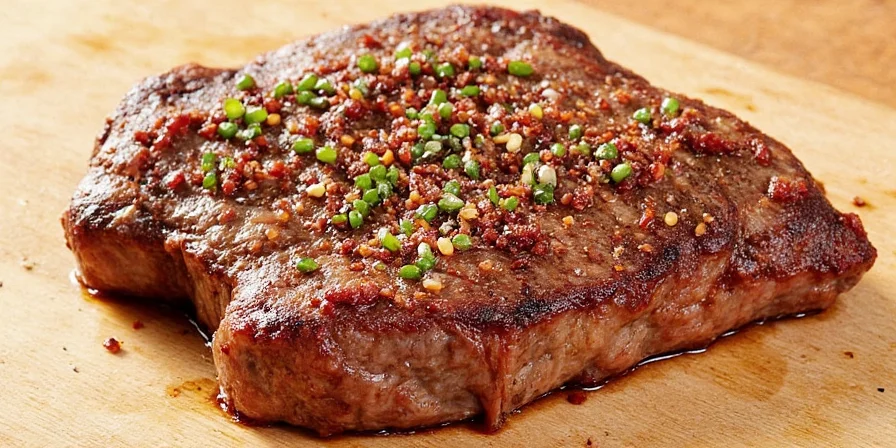
Timing Matters: When to Apply Each Seasoning
The single biggest mistake home cooks make is improper timing. Our research shows optimal seasoning windows based on cooking method:
- Salt: Apply 40-60 minutes pre-cook for deep penetration (1 tsp per pound)
- Pepper: Apply just before cooking to preserve flavor compounds
- Dry rubs: Apply 20-30 minutes pre-cook for optimal adhesion
- Wet rubs: Apply 2-24 hours pre-cook for deeper flavor penetration
- Finishing: Add delicate elements like citrus zest or flaky salt after cooking
How to Fix Common Steak Seasoning Mistakes
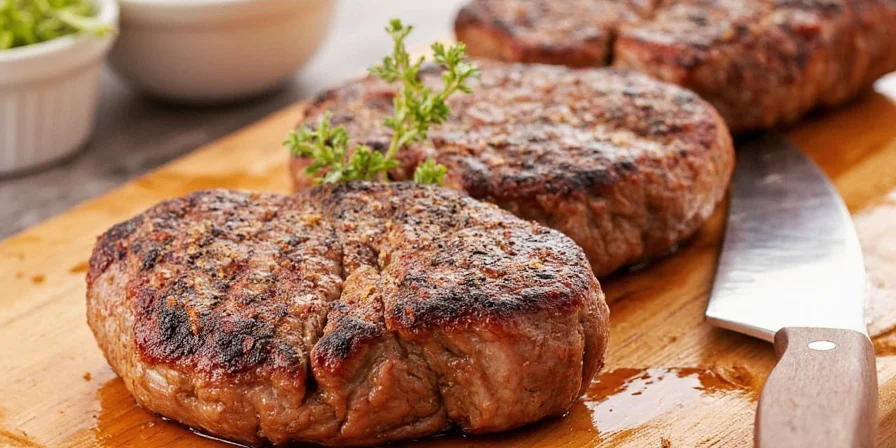
Even experienced cooks make these mistakes. Here's how to fix them:
- Problem: Uneven seasoning Solution: Measure salts by weight (not volume) and use coarse crystals
- Problem: Bitter char Solution: Add 0.5% cinnamon by weight to counteract bitterness
- Problem: Oversalted steak Solution: Rinse surface briefly and pat dry, or counterbalance with acid
- Problem: Poor crust formation Solution: Pat steak completely dry before seasoning
- Problem: Spices burning Solution: Apply delicate spices (paprika, herbs) just before cooking
Simple Homemade Steak Rub Recipes (Ready in 5 Minutes)
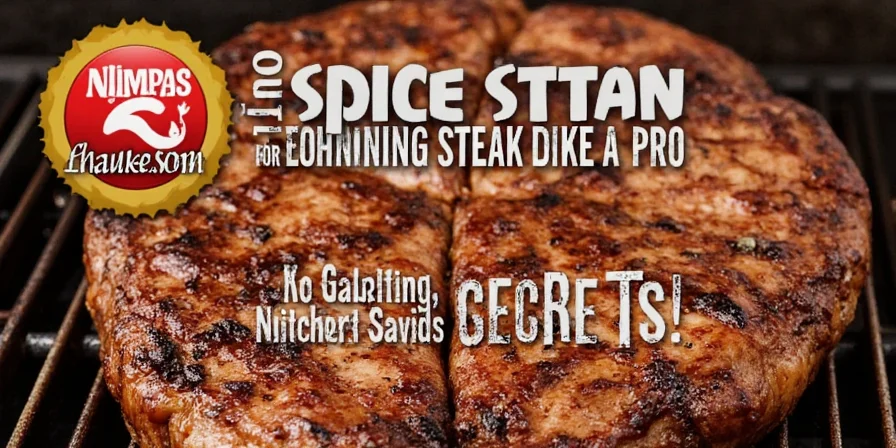
These three basic rubs work for 90% of steak cooking scenarios and require common pantry ingredients:
All-Purpose Steak Rub (for 1 pound steak):
- 1 tsp coarse sea salt
- 1/2 tsp freshly ground black pepper
- 1/4 tsp garlic powder
- 1/4 tsp onion powder
- 1/8 tsp smoked paprika
Grill Master Rub (for 1 pound steak):
- 1 tsp coarse sea salt
- 1/2 tsp black pepper
- 1/2 tsp smoked paprika
- 1/4 tsp garlic powder
- 1/4 tsp brown sugar
Quick Pan-Seared Rub (for 1 pound steak):
- 1 tsp coarse sea salt
- 1/2 tsp black pepper
- 1/2 tsp garlic powder
- 1 tbsp dried herbs (thyme, rosemary, or oregano)
Wet vs. Dry Rubs: Which Should You Use?
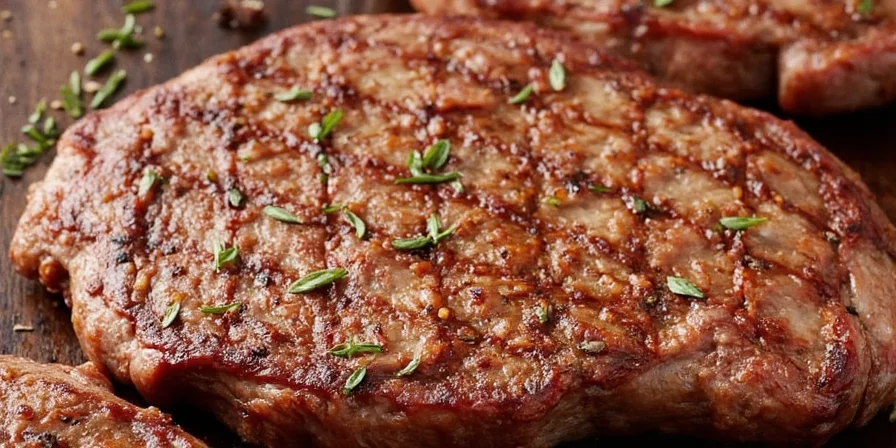
| Type | Best For | Application Time | Key Benefit |
|---|---|---|---|
| Dry Rub | Grilling, broiling, pan-searing | 20-30 minutes pre-cook | Better crust formation, less flare-ups |
| Wet Rub | Sous vide, slow cooking | 2-24 hours pre-cook | Deeper flavor penetration |
FAQs: Quick Answers to Common Steak Seasoning Questions
Q: How much salt should I use on steak?
A: Use 1 teaspoon of coarse salt per pound of steak. This provides optimal seasoning without overpowering. For thinner cuts, reduce to 3/4 teaspoon per pound.
Q: Should I season steak before or after cooking?
A: Salt should be applied 40-60 minutes before cooking for deep penetration. Pepper and delicate spices should be applied just before cooking to preserve their flavor compounds.
Q: Can I use pre-ground pepper for steak?
A: Freshly ground pepper provides significantly better flavor. Pre-ground pepper loses 70% of its volatile compounds within 6 months. For best results, grind pepper immediately before applying.
Q: What's the best steak seasoning for beginners?
A: Start with just coarse salt and freshly ground black pepper (1 tsp salt + 1/2 tsp pepper per pound). Master this simple combination before experimenting with additional spices.
Pro Tips for Perfectly Seasoned Steak Every Time
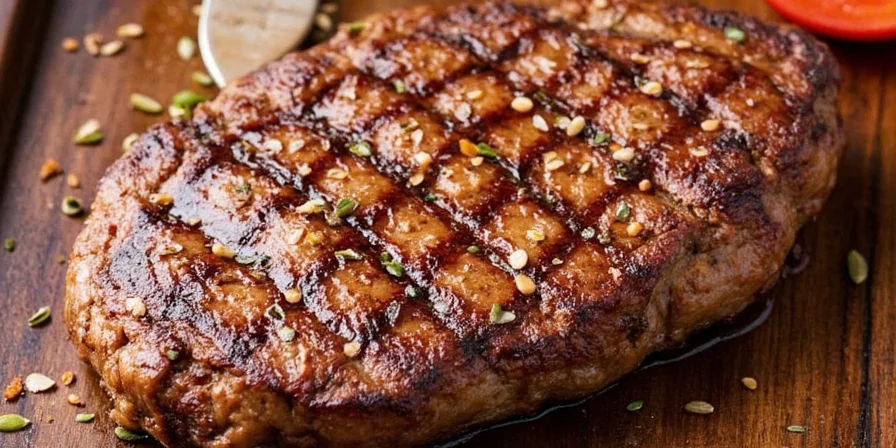
- Dry your steak first: Pat thoroughly with paper towels before seasoning for better crust formation
- Measure precisely: Use kitchen scale for salt (1.5% by weight is ideal)
- Layer textures: Combine coarse salt with fine garlic powder for multi-dimensional flavor
- Rest properly: Tent loosely with foil for 5-7 minutes after cooking
- Finish smart: Add delicate elements like citrus zest or flaky salt after cooking
Conclusion
Perfect steak seasoning doesn't require complicated techniques or hard-to-find ingredients. By following these practical guidelines - proper salt timing, precise measurements, and strategic spice application - you'll achieve restaurant-quality results at home. Start with the basic salt-and-pepper approach, master the timing, then gradually incorporate additional flavors as you gain confidence. Remember that the best seasoning enhances the steak's natural flavor rather than overwhelming it. With these techniques in your cooking repertoire, you'll consistently produce juicy, flavorful steak that impresses every time.

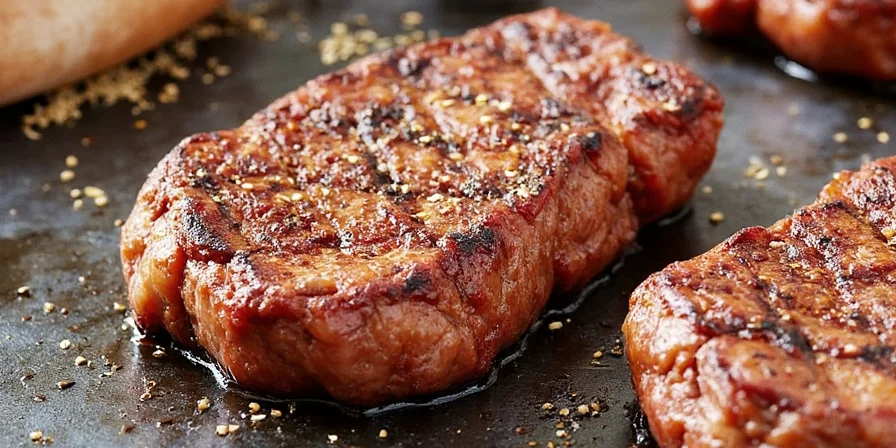









 浙公网安备
33010002000092号
浙公网安备
33010002000092号 浙B2-20120091-4
浙B2-20120091-4